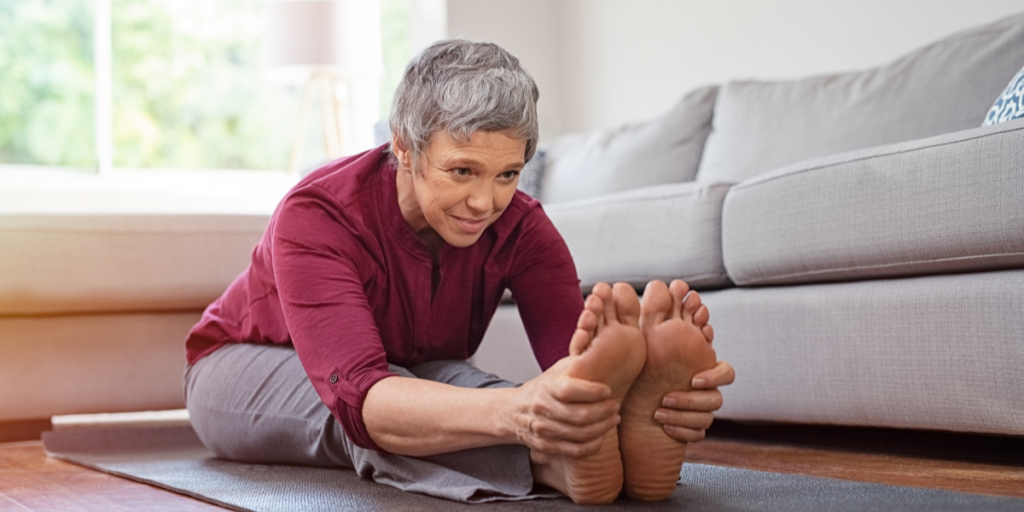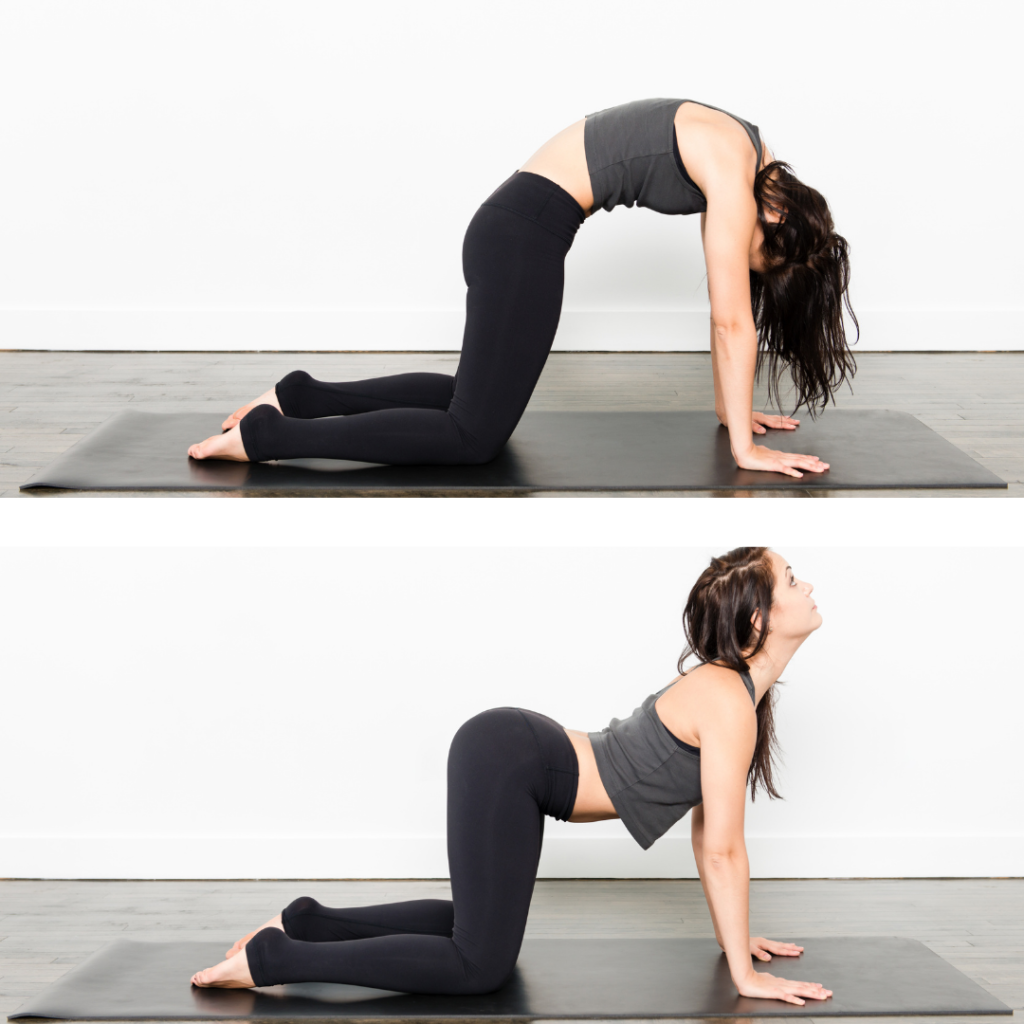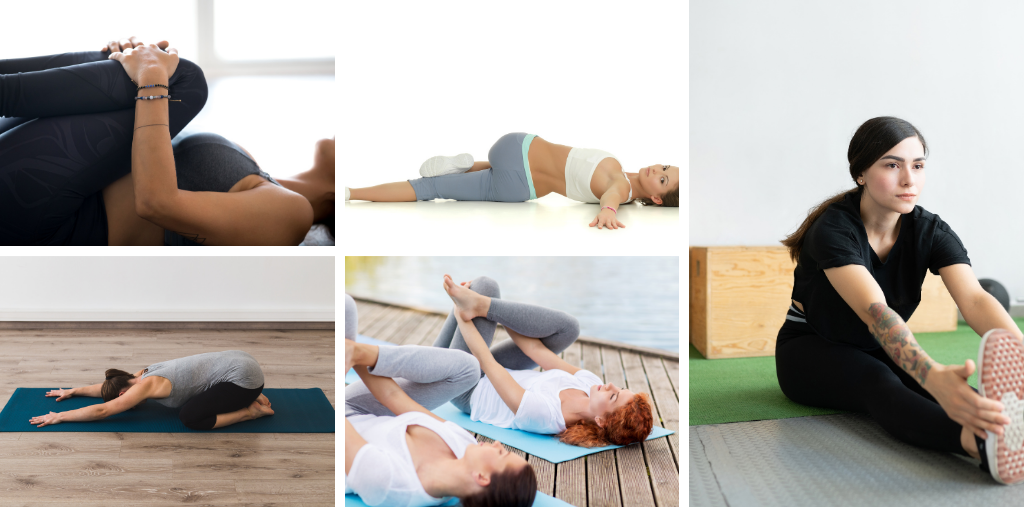Finding it hard to touch your toes? How important is flexibility especially as we get older? Learn the top reasons you need to increase flexibility.

Flexibility is something we often push aside. We’re just excited we got our workout in! Perhaps you’re like me with the best of intentions, like “I’ll stretch tonight”. Then “tonight” gets busy and well….
There’s always tomorrow. Sound familiar?
New here? Thanks for stopping by. After you read this post, check out my other blogs for the woman over 50 who wants to lose body fat, have more energy and love her body again.
- Secrets to losing weight with walking routine
- How to easily start reducing your calories today
- 5 Reasons you want to start counting macros today
- 8 reasons you should stop dieting to lose weight
- Use this time to create your at-home fitness routine
- 5 Reasons you want to start increasing your physical activity today
- Effective steps to reverse the creeping weight gain
Can you increase flexibility after age 50?
Are you feeling like you’ve lost some of your flexibility? Wondering if you can get it back? Yes, it is totally possible. You CAN regain your flexibility at any age – even over 50.
And, the first step is to start moving. If you’ve been inactive for a while, just start by moving more. Walking is a great way to start increasing your flexibility.
Next, I’ll also show some upper body and back stretches below that you can do to get started.
What is flexibility?
One way to think of flexibility is the ability to bend without breaking (or in other words, pulling/straining a muscle). You can also think of it as the range of motion of a joint.
How do your muscles get so tight?
Muscle tightness can occur during or after exercise (especially with intense cardio or strength training) or from prolonged inactivity (like sitting at a desk all day).
Another good reason to get up and move every hour or so.
Top benefits of stretching
Are you wondering “Just how important is it to add stretching to your already busy routine?”
Personally, I feel the benefits increase exponentially the older we get. Here are some of the key benefits of stretching regularly:
- increases flexibility which helps us move more easily
- delays the decline of mobility that often comes with aging
- increases range of motion
- improve circulation
- can reduce muscle soreness
- reduce risk of injury
- less pain
- improved posture and balance – proper alignment and corrects imbalances
Types of stretches to increase flexibility - dynamic vs static
Dynamic stretches– These are active movements that cause muscles to stretch but you don’t hold the stretch. Great for beginning of workout. One of my favorites is swinging my arms in front of my body like I’m giving myself a hug.
Static stretches– For static stretches you hold the stretch for a minimum of 10 seconds and preferably work up to a 60 second hold. These should be done at the end of your workout when your body is warm.
Best exercises to increase upper body flexibility
- Ear to shoulder stretch – bring your right ear toward your right shoulder. For an additional stretch, use your right arm to apply gentle pressure to your head. Hold for 10 seconds and switch sides.
- Cross arm stretch – bring your right arm across the front of your body, use the forearm of your left arm as leverage to pull your right arm close to your body.
3. Shoulder rolls – standing tall, in a circular motion roll your shoulders up and back. Reverse direction are roll your shoulders forward.
4. Standing arm circles – this is a great dynamic stretch to do before your workout. Standing tall, arms shoulder level height and extended toward the side of the room, start with creating a small circular motion forward, then reverse. Try it will large circles too.
5. Arm lifts over head – standing or sitting tall, interlock fingers of both hands, raise arms over head. If you have the flexibility, rotate hands so palms face the ceiling,
6. Tricep stretch – lift your right arm up toward the ceiling, keeping your arm close to your head, grab your right elbow with your left hand and gently apply pressure to your right arm. Switch side.

7. Cat cow – this is great for your upper and lower back.
- On your hands and knees, back is flat, wrists directly below your shoulder, knees below your hips.
- Inhale and round your spine up toward the ceiling.
- As you exhale, arch your back and lift your head up.

Best stretches to increase flexibility for lower back
- Knee to chest – laying on your back on thee floor, bring knees into chest, grasp knees with arms and gently pull knees toward chest.
- Lying torso twist – laying on your back, bend your right knee and cross it over the straight left leg, apply gentle pressure with your hand to push your knee toward the floor. Keep both shoulders squared and on the floor. Extend your right arm and look toward your extended arm. Switch sides.
- Seat forward bend – this is also great for your hamstrings (back of your leg). Sitting on the floor with legs extended in front of you and a straight back, lean forward at your hips reaching toward your toes.
- Childs pose – kneel on the floor, sitting on your feet with knees hip width apart, lower your torso between your knees extending your arms in front of you.
- Supine figure 4 – laying on your back, feet on floor, knees bent, cross your right leg across the left, reach your hands through the hole and grab the back of your legs. Gently pull your left leg in toward your body. Hold for 30 seconds. Switch sides.

How often should you stretch?
You can stretch as much as every day. To increase flexibility, stretch 10 – 15 minutes at least 2 – 3 times a week.
If you can work up to 5-6 days, GREAT!
Increase flexibility with these daily upper body stretches
Many of us tend to hold tension in our necks and shoulders. This is especially true if you spend time at a desk leaning over a computer. For a quick stretch break, I like:
Shoulder rolls -just a few forward rolls and then backwards
Follow this one with the overhead arm stretch. I also like to add in a lean to each side.
If you have a bit more time for more of a stretch in your back and hamstrings, include the knee to chest stretch and my absolute favorite is the supine figure 4.
Personal journey to increased flexibility
Years ago, I injured by back from extensive running and minimal stretching (a big no-no, which is another story).
Walking was painful, sitting was painful, Standing was even worse.
I thought I had tried everything and nothing was helping. I started stretching every day, started slow and gradually increased. I’ve been pain-free for years. Anytime I start to feel tightness or the hint of pain, I realize I’ve slacked off on my stretching. Back at it I go!
Stretching isn’t a cure-all, but it sure goes a long way to helping me stay more flexible and pain-free.
Pulling it all together to increase flexibility
Start slowly and allow your body to adapt to the stretches
Never stretch to the point of pain. You will feel a little discomfort, but it should never hurt.
Hold stretches for 10 – 20 seconds. Over time increase to 60 seconds.
Always stretch a warm body (cold muscles do NOT like to stretch). Best time to stretch is after your workout.

